Introduction
In this article I want to discuss the flawed perception of the human body by the psychiatric profession, the gut-brain axis, serotonin, the mechanism of action on psychotropic drugs and detailed study of the tragic Columbine school shooting and the two young adults that were responsible.
Psychiatry’s Perception of the Human Body is Flawed
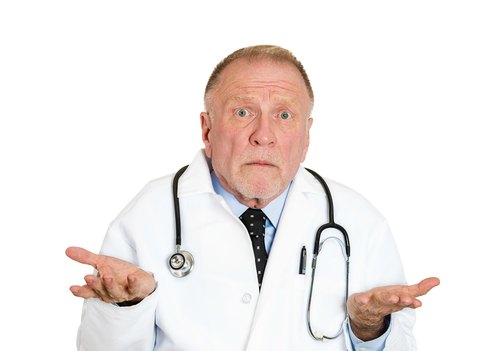
“A riddle wrapped in a mystery inside an enigma”
Winston Churchill 1939
Except for of handful of people past and present (including Abram Hoffman, the whole of Psychiatry is based on symptom suppression, in terms of how they treat their patients; it’s as if they can approach mental disorder on the premise that the human brain is separate from the rest of the body. Allopathic medicine in the same vein treats the body as if it’s a series of parts that can be diagnosed and treated without consideration of other parts of the body. The existence of the biological, physiological gut brain axis is irrefutable. This is evident since anybody taking SSRI’s experience nausea and vomiting which then leads to diarrhea and then constipation because the drug is interfering with a crucial neurotransmitter needed for natural bowel movement.
So WHY does the psychiatric profession insist on medicating behavioral problems rather than healthy therapy sessions and (God Forbid) nutritional advice. Some clinical practices have nutritionists working with medical physicians why not with psychiatrists.
I am betting that every reader of this article knows that if on the day of your driving test, or before you give a public talk or before you go to the dentist you feel a little anxious…and then what happens..you get butterflies in your stomach. If you didn’t get the butterflies, you probably would not think you were that nervous. So what is my point ??…what is happening?..well your brain is communicating with your gut..right. So it stands to reason that there is a biological link between your brain, your nervous system and your enteric nervous system (the gut or as it is also known ‘the Second Brain’). It is not a one way street,,it is a two way street..Signals are sent to the brain via the nervous system to the gut and the reverse is true.
Evidence of the Gut-Brain Barrier
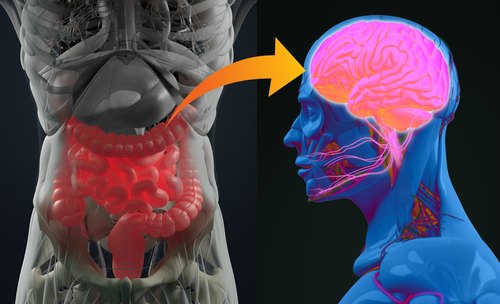
Does it not make sense therefore that activity happening anywhere in the enteric nervous system including the gut and the bowel the brain needs to know about it. It is a fact that people who suffer from any one of the psychotic disorders also causes problems in the bowel. Dr Campbell Mcbride informs us that her GAPS patients suffering from Autism, dyslexia, dyspraxia, depression, schizophrenia would invariably suffer with constipation, because these individuals may not have a bowel movement for days and eventually when they do it’s agonizing. Constipation is always a sign of an unhealthy gut flora. Diarrhea can also occur. The beneficial bacteria such as Bifidobacteria and E.Coli play an active part in appropriate stool formation by releasing enzymes to stimulate mucus production in the bowel wall for stool lubrication. So, again as I have stated before if the gut flora is upset then the bacterial flora in the bowel will also be upset.

Reiteration of Michael Gershon’s Brilliant Work on Serotonin
If you have read my previous article ‘Conventional medicine (selling sickness) Part V you will remember I wrote :I would like to lean on the great work of Michael Gershon who in the early 1980’s he was attempting to ‘track down’ Serotonin distribution in the body as part of his research on the enteric nervous system, which he termed our ‘Second brain’, or in layman’s terms, our gut. As he points out, even in 1981 scientists accepted that 99% of serotonin is manufactured in the gut and 1% is produced by the brain (simply a minor supplement). The lion’s share of serotonin is actually stored in the bowel so it is conceivable that not only is serotonin a neurotransmitter for the brain but it is also a neurotransmitter for the enteric nervous system.
Bacteria and Enterochromaffin cells are both members of the Serotonin Orchestra
Serotonin or 5-hydroxytryptamine (5-HT) is predominantly produced by enterochromaffin (EC) cells situated in the gastrointestinal tract but it is our bacterial neighbours, specifically 20 species (approx) of spore forming bacteria that elevate the production of serotonin (without these bacteria the EC cells would make considerably less, approx 60% less). This bacterial/host collaboration is not fully understood only that the metabolites (products of the microbes metabolism) are regulated by these spore forming bacteria that elevate serotonin levels in the EC cells by a stimulation effect. We also know that other bacteria produce serotonin alone.
The Source of
Cognitive and Mood Disorders
such as Psychosis
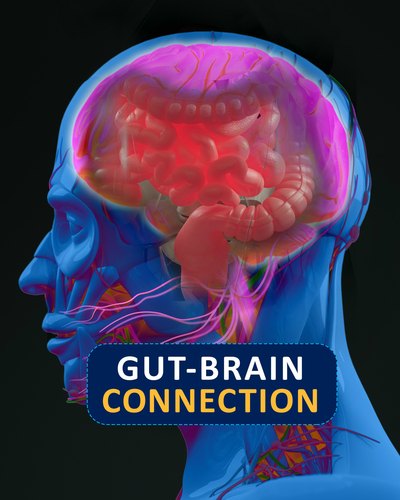
Disorders that affect cognitive and mood disorders such as Autism, Dyslexia, Dyspraxia, ADD, ADHD, Schizophrenia and Depression are all digestive disorders driven by a dysbiotic gut allowing commensal flora overgrowth to release their toxins which eventually cross the blood brain barrier causing a chemical imbalance in the brain. In my opinion it only makes sense that depression can only be treated naturally without dangerously interfering with serotonin and dopamine production in the brain. Furthermore, depressive individuals whose gut is in chaos are more likely to produce an imbalance of serotonin affecting their gut and bowel function, and their cognitive function together.
The Mechanism of Action
of Anti-Psychotic drugs
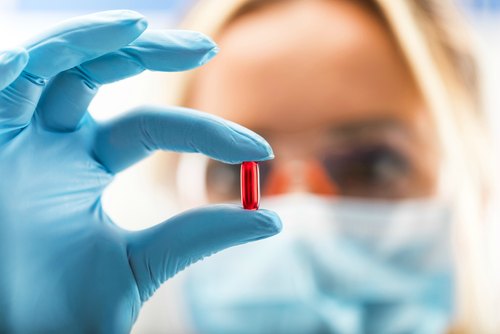
Drug Choices
So conventional allopathic medicine believe they have the problem solved simply by prescribing an anti-psychotic drug. Dopamine D2 antagonists are the drug of choice, and did you know you have a choice of some 50 alternatives from Acepromazine to Ziprasidone. The consequences of taking some of these drugs include depression (so you trade schizophrenia for depression), Akathisia (inner restlessness), irritability and aggression, sexual dysfunction (more irritability and aggression – following a dopamine blockade in the tuberoinfundibular pathway (the pathway shown in purple on the diagram below), menstrual disorder, increased risk of obesity and diabetes 2, Neuroleptic Induced Deficit Syndrome (basically the same symptoms you had with schizophrenia: emotional blunting, apathy, difficulty in thinking, hypobulia (diminished motivation), inability to concentrate, attention deficits and desocialization. But, as we are informed this is due to an associated blockade of the ‘frontostriatal dopamine circuit’ (neural pathway connecting the prefrontal lobe with the Basal ganglia (the pathway shown in Brown on the diagram below)
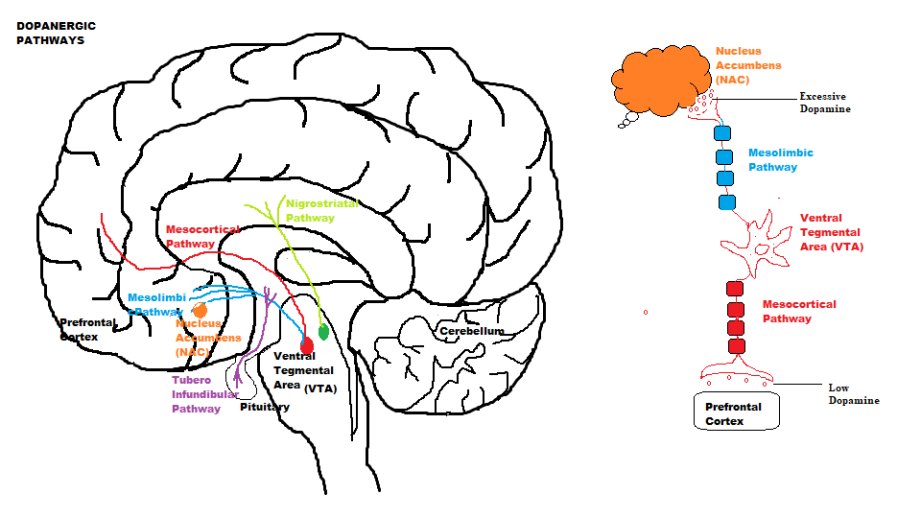
Two More Adverse Effects for Psychotropic Drugs
They (psychiatrist’s) report that the patient does not improve and may even worsen. Well that helps, do they have anything else in their drug tin.. sorry, I forgot to mention…due to an alteration of the physiological dopamine/acetylcholine ratio in the basal ganglia these D2 antagonist drugs have a number of extra-pyramidal adverse effects both short term causing acute dystonia (repetitive muscle contractions), dyskinesia (involuntary muscle movements) and akathisia (restlessness) and long term Parkinson’s and/or Tardive Dyskinesia ( stiff jerky movements of the face and body, grimacing and sticking out the tongue).
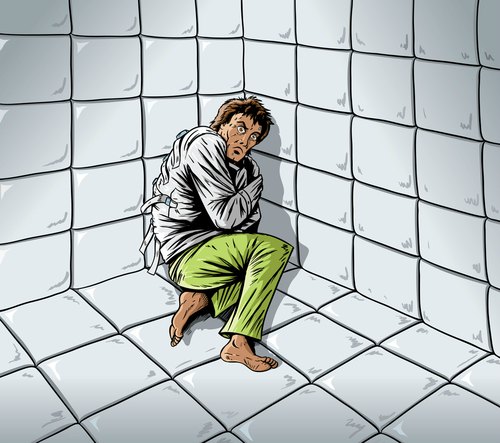
Clozapine – Take me to the rubber room
Are these people serious, who in their right mind (well I guess you’re halfway there with Schizophrenia) would even contemplate taking such a mind altering, body altering poison that converts you into a shivering, grimacing, tongue out, shaking wreck..try and get into a restaurant with your partner in that state..lol. This is unbelievable..I think I will stick to schizophrenia it attracts less attention. However, its OK, they have another drug, Clozapine which is slightly more socially acceptable (Ha Ha) . With this drug you only get dribbling at the urinal, difficulty breathing, feeling sad and discouraged, continual headache, slurred speech, sudden jerky movements of the body, convulsions, chest pain, pounding in the ears, sudden loss of consciousness, hyperventilation, irritability, sleep disorder, unsteadiness, trembling, problems with muscle control, anxiety, black tarry stools, loss of interest or pleasure, muscle spasms, lower back or side pain, restlessness, and much more…for your entertainment..lol. Well at least you don’t get Parkinson’s…come on folks this really is not serious..THIS CANNOT BE SERIOUS..TAKE ME TO THE RUBBER ROOM..and let me serve my days out there.
Mechanism of Action of SSRI drugs
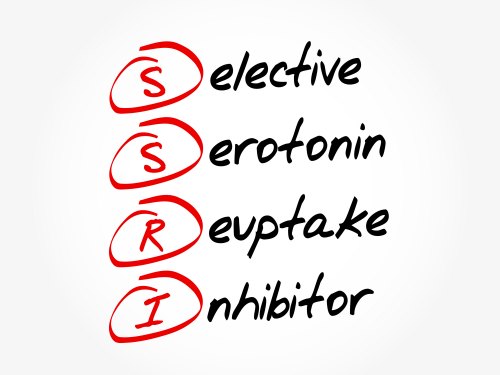
Neurotransmitter Potentiation-Synaptic Elasticity
Again, if you have read my article ‘Conventional Medicine Part V you may recall that what occurs naturally is that serotonin in the nervous system and the enteric nervous system is turned off by the reuptake of serotonin by the serotonin-containing nerves that release it, and then recycled. It is the serotonin transporter that is key to the serotonin reuptake, recycling and inactivation. The SSRI drug in effect inhibits the serotonin transport and in turn inhibits reuptake,recycling and inactivation. The initial effect of this inhibition causes neurotransmitter potentiation (the signal between synapses junctions strengthen) and by taking the drug for a period of time causes Long term potentiation or synaptic elasticity:
Applying the Accelerator and the Brake Simultaneously
By blocking the normal serotonin reuptake from the synapse, Serotonin stays in the synapse longer and the body’s natural feedback mechanism causes the pre-synaptic neuron to down regulate releasing less serotonin while the post-synaptic neuron (the receiver) down regulate its receptors. The drug is acting as a serotonin accelerator while the body’s applying the brake. Overtime, this interference of the serotonin process causes some serotonin receptors to desensitize and fail to respond anymore, while others become less sensitive to stimulation by serotonin.
Case Study:
The Columbine Shooting Rampage 1999

Eric Harris meets Dylan Klebold
I don’t want to regurgitate what happened, that is well documented on many sites, but I wanted to explore the background of the two teenagers that committed the atrocity in an attempt to glean why this event occurred. Eric Harris, the son of an air force transport pilot, appeared to be raised well by his parents, and his former classmate Kyle Ross said that he was typical normal kid when he lived in Plattsburgh NY at the age of 12. In 1993 the Harris family moved to Littleton Colorado where his Father worked in Englewood and Eric went to Ken Caryl Middle school where he met Dylan Klebold the other Columbine shooter in the 7th-8th grade. Eric started school at Columbine in 1996 when Eric was 15.
Eric’s diagnosis
Eric and Dylan were both employed at Blackjack Pizza in 1997, where they purchased the guns used in the shooting spree in April 1999 at the Columbine school. Eric’s father began documenting Eric’s misdeeds which were anger triggered including anger rants on a website (Doom II, e.g I hate the F**G world etc)). In early 1998 Eric’s mother took him to a therapist to treat his anger management issues and I suspect he was prescribed SSRI anti-depressants Luvox (Fluvoxamine). I also assume that he was clinically diagnosed with Obsessive Compulsive Disorder since it is the only condition that this drug is FDA approved for. The Centre of Addiction & Mental Health (CAMH) explains Obsessive Compulsive Disorder (OCD):
“I obsess about causing harm to others through some unintentional act. I worry that I have hurt someone with my sloppy or ineffectual words and will cause them to become seriously unhappy. Or that I have left a cigarette burning in my house or an appliance on and that my house will explode and wipe out the whole neighbourhood. This causes me to check things more than once before I leave the house, and then to go back into the house to check again.”
Obsessive Compulsive Disorder (OCD)
The CAMH organization state that depending on severity at least 20% of those affected with this disorder, obsessions and compulsions can occupy the individual the entire day, and approximately 2/3rds who develop OCD occurs in adolescence or early adulthood. Their obsessions can be fear of contamination by dirt or disease or saliva, fear of not having done something to prevent an accident, making a mistake, focus on order of things and objects, fear of having blasphemous thoughts, fear of harming oneself while eating for example with a knife and fork, fear of harming others. fear of inappropriate sexual thoughts.
The Aftermath Investigation
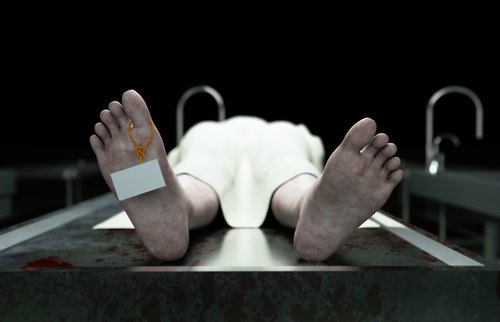
The autopsy on Eric Harris was that he had low therapeutic levels of Luvox in his system at the time of his death, Luvox has a ‘washout period of 14 days for a 60mg prescribed dose. Dylan Klebold’s autopsy reported no drugs or alcohol in his system. From the Father’s journal he had various discussions with Eric saying that:
….his son would like to talk to an accuser face to face with an adult present.. but his father called another parent who did not return his call …..Eric has not broken his promise..about leaving each other alone….
Essays confiscated from Eric’s home contained statements that displayed his enhanced sense of grandiosity. The two also meticulously planned the shooting rampage with rough schematics of the cafeteria which were also found in Eric’s bedroom. Had they not failed to wire the propane bombs properly in the cafeteria many more lives would have been lost. According to the article on the Slate website, Michigan’s state university psychiatrist Dr Frank Ochberg and Special Agent Dwayne Fuselier a clinical psychologist with the FBI stated that Eric Harris had developed psychopathic* tendencies blaming everything and any body on his problems. Dylan Klebold on the other hand was the opposite, where he had developed into a depressive, suicidal hot head blaming himself for his problems. Both Ochberg & Fuselier said:
“Klebold was hurting inside while Harris wanted to hurt people”.
* Dr Robert Hare writes in his book ‘Without Conscience’ that unlike psychotic individuals. Psychopaths are rational and aware of what they are doing and why, and their behavior is the result of free choice, freely exercised.
Conclusions
In Japanese culture it is common not to look for blame but try to avoid the same thing happening again, or fix the problem. I agree with this philosophy, but to fix the problem we need to know what fueled the problem in the first place. Many of the US population blamed the parents, but that is not what the reports indicate, and like the majority of parents they tried their best to raise socially acceptable children. To sculpt and raise a child is complex, and as parents they understand what is desirable and what is not, what is acceptable and what is not, boundaries and lots of love, respect, understanding and guidance. Both these young adults it would appear received these attributes (I can’t say for sure obviously), but raising a child is a 50/50 split, the child is an incumbent to in this process. Even Sue Klebold admitted that she missed several signs of trouble, but her son was extremely shy and probably kept a lot of his emotions inside.
Eric Harris Conclusive Remarks
Eric Harris had been taking this drug for a year before the columbine event..was it a contributing factor ??..did it interfere with a bout of synaptic pruning??…we will never know. What I do believe is, that Eric’s underlying character developed into an inner rage that he was unable to control..underlying human character is definitely genetic, but given the right exogenous stimuli an inbred character can develop positively, if not it only fuels the anger and rage that is already in there. A person that Eric had become, it would have been necessary to develop tolerance of others around him, allowing conscience to prevail, and to suppress ant air of superiority. Unfortunately, Eric allowed his inner range to get the better of him pouring more gasoline on the raging fire inside of him, and the possible adverse effects from the psychotropic drug Luvox**certainly did not help the situation’
Luvox list of side effects:
**Gastrointestinal : (10% or more): Nausea (40%), diarrhea (11%), constipation (10%), dyspepsia (10%), (1% to 10%): Vomiting, flatulence, tooth disorder, dysphagia
Nervous system: (10% or more): Headache (22%), somnolence (22%), nervousness (12%), dizziness (11%), (1% to 10%): Tremor, hypertonia, agitation, CNS stimulation, taste perversion, hyperkinesia, myoclonus
Psychiatric (10% or more): Insomnia (21%), (1% to 10%): Anxiety, decreased libido, depression, manic depression, Asthenia (14%), (10% or more): Flu syndrome, chills, malaise
Cardiovascular: (1% to 10%): Palpitations, syncope
Postmarketing reports: Vasculitis, ventricular tachycardia (including torsades de pointes)
Dermatologic: (1% to 10%): Sweating
Postmarketing reports: Bullous eruption, Henoch-Schonlein purpura, Stevens-Johnson syndrome, toxic epidermal necrolysis
Genitourinary: (1% to 10%): Abnormal ejaculation, urinary frequency, impotence, anorgasmia, urinary retention
Postmarketing reports: Amenorrhea
Respiratory: (1% to 10%): Upper respiratory infection, dyspnea, yawn
Hematologic: Postmarketing reports: Agranulocytosis, aplastic anemia
Metabolic: (1% to 10%): Anorexia, weight gain, weight loss
Postmarketing reports: Porphyria
Ocular: Common (1% to 10%): Amblyopia
Renal: Postmarketing reports: Renal failure
Hypersensitivity: Postmarketing reports: Angioedema
Hepatic: Postmarketing reports: Hepatitis[
Dylan Klebold’s conclusive remarks
In terms of Dylan Klebold who was the more delicate of the two probably lacked confidence since he was more insular and shy and as result developed a form of depression having inner thoughts that one article described as “ I first of all blame myself for my actions, and secondly I blame God for creating such a pathetic individual as myself.” In some respects he was the more complex of the two as well; it would appear that people of low esteem can easily latch on to a ‘stronger’, more motivated, more out-going personality as if attaching to an ‘outlet’, allowing him to express his feelings that he found difficult without the ‘crutch’. His mother Sue Klebold informs us that her son’s writings portrayed love and a sense of conscience, but also being in pain and agony in his thoughts that he wanted an end to.
She says that “ I knew him to be a gentle and loving person, not this aberrant character I saw on the basement tapes that the two made brandishing their weapons and talking of hate”. It would appear a case of her son ‘getting in with the wrong crowd’. In her book ‘A mother’s reckoning’ she describes the guilt, despair and confusion that has plagued her for many years and asking the obvious question” what could I have done differently?” and states with a heavy heart I am sure “ I will love him until I breathe my last breath, and he’s like an invisible child that I carry in my arms everywhere I go, always” Human development is attributable to many factors and the parental input is only a part, and I am sure the Klebold parents did their part.

“We rarely get to prepare ourselves in meadows or on graveled walks; we do it on short notice in places without windows, hospital corridors, rooms like this lounge with its cracked plastic sofa and Cinzano ashtrays, where the cafe curtains cover blank concrete. In rooms like this, with so little time, we prepare our gestures, get them by heart so we can do them when we’re frightened in the face of Doom.”
-Quote ‘Silence of the Lambs’
References/Acknowledgments:
- Luvox. Clozapine, Acepromazine,Ziprasidone Drugs.com
- Gut and Psychology Syndrome Dr Natasha Campbell Mcbride Book 2010
- What is obsessive compulsive disorder ? Centre for Addiction & Mental health (CamH)
- Eric Harris A Columbine site
- The Columbine Paper: What the parents knew Rita Healy 2006 TIME
- The Depressive and the Psychopath Dave Cullen Slate
- Autopsy reports of Eric Harris & Dylan Klebold The Columbine guide Dave Cullen
- Columbine shooters mother : “I carry him everywhere I go always” Sue Klebold Feb 2016 Interview with Terry Grosson on ‘Fresh Air’ NPR
- The silence of the lambs quotes by Thomas Harris Goodreads
About The Author: Eric Malouin
In terms of my heritage I am not a thoroughbred, I am half English from England and half French Canadian from Quebec. Having spent the last 10 years in Medical research I thought that it was time to share my passion for true health to anybody interested in maintaining health without using conventional medicine. Once in the distant past I lived off conventional grocery shelves until you visit the man in the white coat and then a light shines through the darkness that you had not realized you were in… I was in..the twilight zone….I cured my own problems using natural methods, although they were not a big deal since I have always exercised..jogging every morning and tennis 12 hours/week, swimming but I was eating a lot of devil food that was causing my body to become unbalanced..an easy fix..reprogrammed my taste buds and gave the food back to the devil…lol
I hope you enjoy the articles……
Regards,
Eric
Contact the Author: emalouin@gmail.com